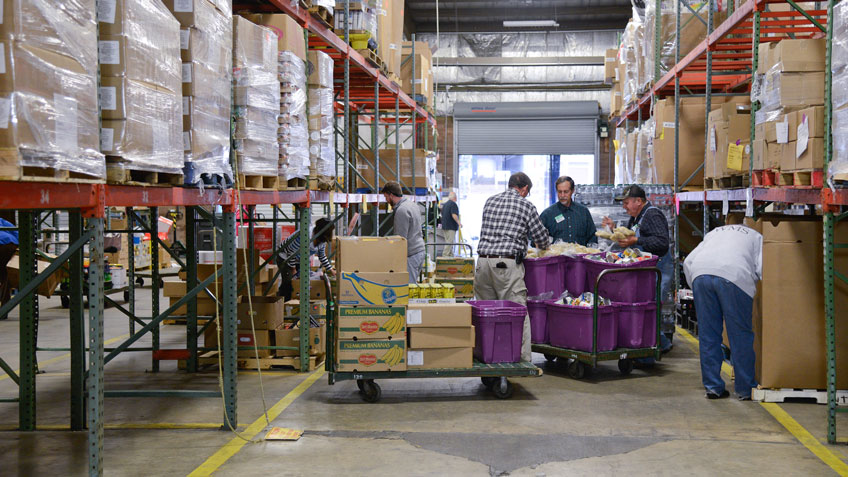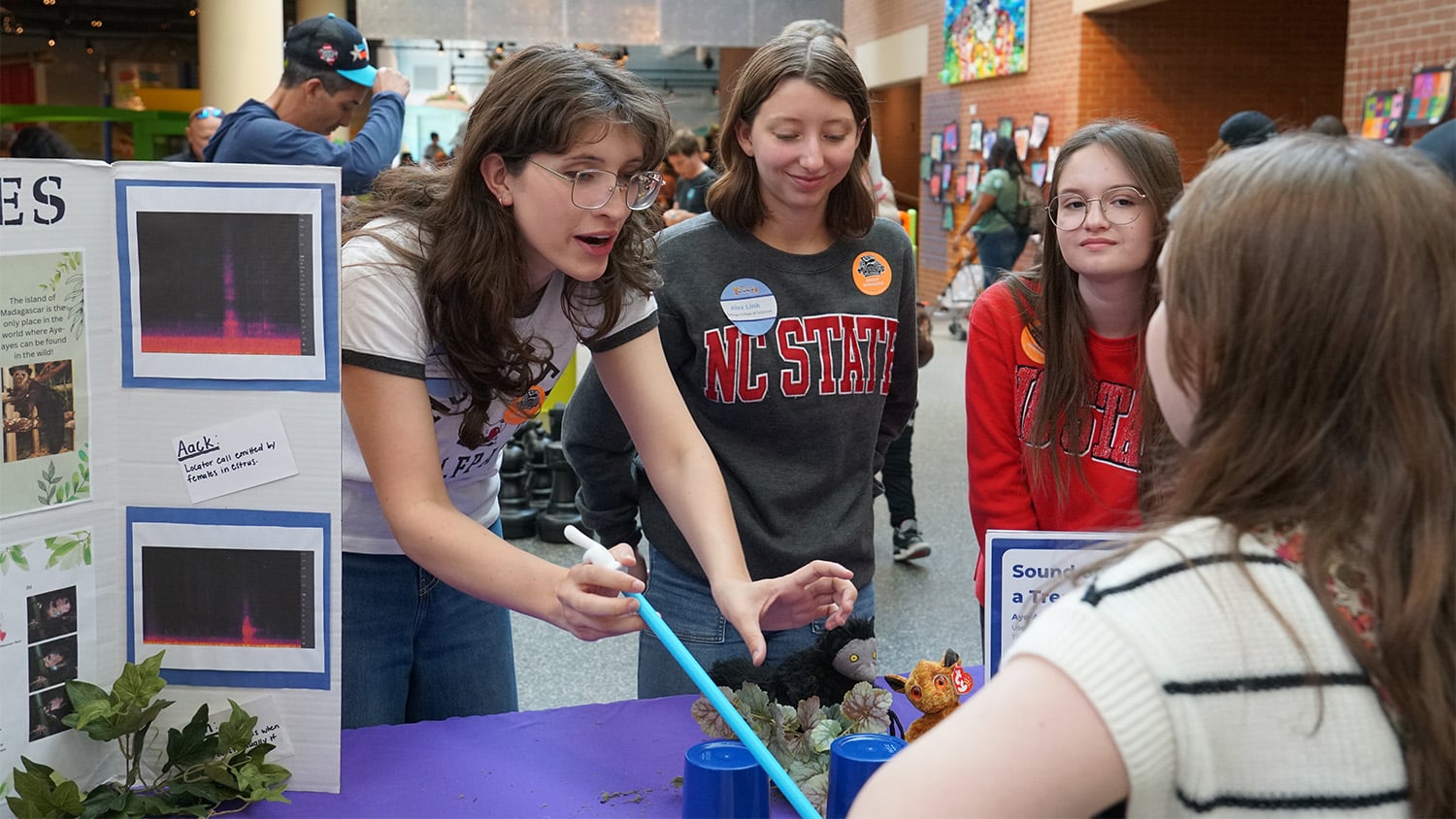Over the past decade, the number of people at risk of going hungry in North Carolina has soared to more than one in six. It often falls to the state’s nonprofit food banks to provide relief from rampant food insecurity.
Distributing tens of millions of pounds of food to those in need is a staggeringly complex problem — one that researchers at NC State are determined to help solve.
Julie Ivy is an associate professor in the Edward P. Fitts Department of Industrial and Systems Engineering and an expert in medical decision-making. In 2009, Lauren Davis of North Carolina A&T State University’s Department of Industrial and Systems Engineering approached her with a fresh research opportunity: improving America’s humanitarian food network.
One of Davis’s graduate students had volunteered at a food bank and wanted to look deeper into its workings. Davis, herself an NC State alumna, invited Ivy and other researchers to visit the Second Harvest Food Bank of Northwest North Carolina in Winston-Salem to investigate the unique needs of food banks.
“Once we took a tour, we were able to see the scale of their operation,” said Davis. “That gave us an entrance into this hunger relief network. And then we expanded.”
Fair and Effective
The engineers began meeting with the Food Bank of Central and Eastern North Carolina (FBCENC) in Raleigh, which serves more than 800 partner agencies across 34 counties. Last year, the food bank distributed a record 53.6 million pounds of food to soup kitchens, emergency shelters and food pantries across an area roughly the size of Switzerland.

To achieve that level of service, the FBCENC has to juggle an uncertain supply of donated food — more than half of it perishable — and quickly distribute it across a shifting network of partners. The enormous task is further complicated by a simple fact: There are never enough donations to go around.
“If you had sufficient food for everyone in need, you’d give them exactly what they need,” noted Ivy. “But unfortunately no food bank operates with that luxury.”
That’s where engineering kicks in. Because supply is significantly less than demand, the FBCENC uses its own “Fairshare” computational model to ensure that each of its 34 counties gets an equitable share of donated food.
Fairness is vital to the food bank’s humanitarian work, but so are efficiency and effectiveness, which keep precious food from going to waste. That balancing act can be demanding for a busy nonprofit, so the FBCENC was eager to offer up its underlying data for outside validation when the researchers came knocking.
Engineering Solutions
With $400,000 in funding from the National Science Foundation, Ivy and Davis assembled a team to analyze and augment the FBCENC’s operations. The team included Reha Uzsoy and İrem Şengül Örgüt at NC State, Steven Jiang and Luther Brock at N.C. A&T, and Charlie Hale and Earline Middleton of the FBCENC, as well as a host of undergraduates.

Among their key findings: The food bank’s Fairshare model was often stymied by the capacity of individual counties to retrieve and store food. Certain “bottleneck” counties simply didn’t have the resources to effectively use the share they were allocated.
“If ‘County A’ is unable to retrieve and distribute its fair share of the food, that food should not be wasted,” Ivy said. “It makes sense to distribute that food in areas that have the capacity to make use of it. But then you need to help County A improve its capacity.”
That might mean launching a mobile food pantry in that county to boost its ability to collect and distribute its fair share. The team also found that satellite delivery locations and better transportation coordination could help food banks overcome some of their challenges. These findings would apply not just in North Carolina, but also nationally.
And this isn’t the only work NC State has done to support the FBCENC. The Institute of Advanced Analytics has helped to visualize data and to model how changing unemployment or food stamp usage could affect food insecurity. Last year, a senior design class in the Department of Mechanical and Aerospace Engineering built vacuum chambers that the FBCENC now uses to confirm whether food in dented cans is safe to consume.
Research That Brings Relief
Hunger continues to rack North Carolina. Between 2010 and 2014, the state regularly ranked among the worst in the nation for food insecurity, with one in every four children not getting enough to eat. Among the households the FBCENC serves, more than half have at least one working adult. For the researchers from NC State and N.C. A&T, such figures make their contribution feel all the more meaningful.
“With this particular type of research, we can see a direct impact,” said Davis. “We’re working very closely with our partners at the food bank, not only getting data and providing them with information in return but also building a friendship to combat this hunger problem in the United States.”
Ivy agreed, noting that the work has inspired her students to seek out further humanitarian work.
“What’s been particularly exciting about this research is that we’re able to use industrial and systems engineering to make a difference in the world,” she said. “We’ve had so many undergraduate students, master’s and Ph.D. students, who start working on this as a class project, and then they ask, ‘Okay, how can we do more?’”
- Categories:



